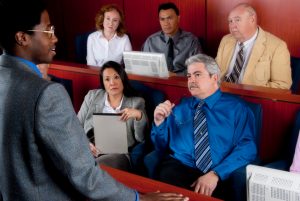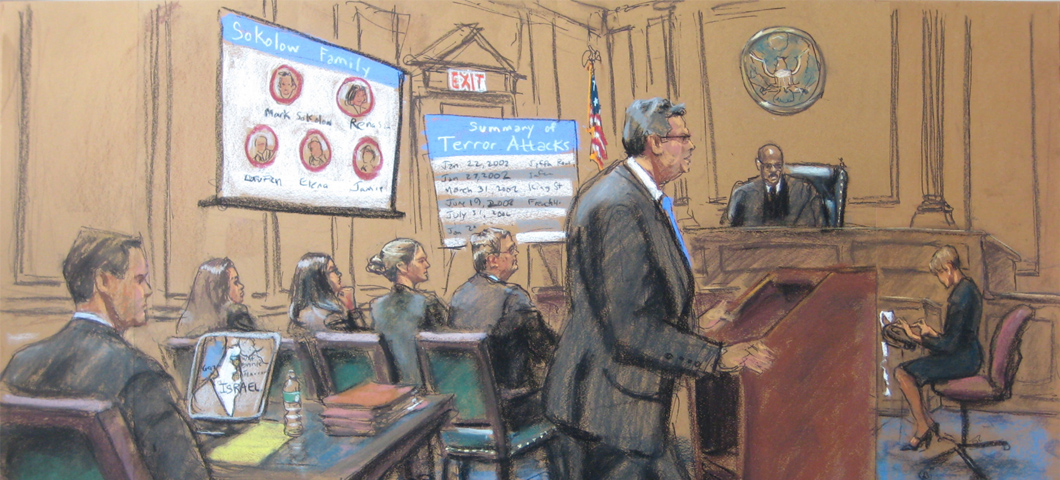Browsing the Complexities of Test Presentations: Tips for Seamless Delivery and Engaging Debates
In the realm of lawful process, the art of trial presentation stands as a critical factor of success. The intricacies inherent in trial presentations require a delicate balance of finesse, skill, and technique.

Understanding Trial Purposes
To properly navigate a trial, it is important to have a clear understanding of the purposes that need to be attained. Before stepping into the courtroom, legal groups must specify their goals and desired outcomes. These objectives function as leading principles throughout the test, shaping approaches and affecting decision-making processes.
Comprehending trial goals entails a detailed analysis of the situation, legal precedents, and the client's finest rate of interests. Trial Presentations. It needs a thorough exam of the facts, identifying essential concerns, and anticipating possible challenges. By establishing particular and quantifiable goals, lawyers can customize their debates and discussions to straighten with the preferred results
Moreover, a clear grasp of trial goals makes it possible for legal teams to focus on proof, witnesses, and lawful disagreements efficiently. It enables the advancement of a meaningful narrative that reverberates with the discretionary, reinforcing the general instance discussion.

Organizing Proof Properly
Having a clear understanding of test purposes lays the structure for organizing proof effectively in legal proceedings - Trial Presentations. By straightening the presentation of evidence with the wanted end results of the trial, legal teams can reinforce their disagreements and enhance their persuasiveness. One essential facet of organizing proof is categorization. Grouping evidence based upon styles or significance to certain legal aspects can assist simplify the presentation and make complex details much more absorbable for the judge or court.
An additional secret component in arranging evidence efficiently is establishing a logical flow. Providing evidence in a consecutive and meaningful fashion can aid construct a compelling story that sustains the lawful arguments being made. Additionally, utilizing aesthetic help such as charts, charts, or timelines can even more enhance the company of proof and aid in clarifying intricate connections or sequences of occasions.
Moreover, making sure that all evidence presented is permissible and appropriate to the situation is vital. Inadmissible or unnecessary proof can detract from the stamina of the disagreement and possibly damage the reputation of the presenting party. For that reason, a thorough testimonial and choice procedure ought to be carried out to include just the most legally sound and impactful proof in the trial presentation.
Crafting Persuasive Narratives
Crafting engaging narratives plays an essential role in offering persuasive disagreements throughout legal proceedings. A well-crafted narrative has the power to mesmerize the target market, stimulate emotions, and ultimately guide the choice for the here and now event. When building a story for a trial discussion, it is essential to develop a clear storyline that highlights bottom lines and links them in a coherent fashion. Begin by laying out the realities of the situation in an engaging way, making sure that the series of occasions is very easy to follow. Introduce characters properly, supplying history information that assists the target market comprehend their activities and motivations. Furthermore, including vibrant descriptions and interesting language can bring the narrative to life, making it more unforgettable site for the court and jury. By weaving with each other proof, testimony, and legal debates into a cohesive and influential narrative, attorneys can efficiently promote for their customers and enhance the possibility of a desirable outcome in the court room.
Grasping Aesthetic Help
Reliable usage of visual aids is crucial to boosting the effect and clearness of trial discussions. Visual help, when made use of purposefully, have the power to simplify intricate information, reinforce bottom lines, and leave a long lasting impression on the discretionary. To grasp visual aids in trial discussions, it is vital to ensure that they are clear, succinct, and appropriate to the disagreements being made.
When incorporating aesthetic help, such as graphes, pictures, charts, or timelines, into a trial presentation, it is vital to keep them visually appealing yet expert. The visuals should enhance the spoken arguments, supplying a graph of the details being gone over without overwhelming the target market with unnecessary information.
Moreover, practicing with the visual aids in advance is important to make certain a seamless distribution during the trial. Familiarizing oneself with the web content, transitions, and timings of each aesthetic aid can aid maintain the flow of the discussion and prevent technological glitches that might arise.
Providing Impactful Closing Debates
A compelling closing debate serves as the conclusion of a test presentation, encapsulating the core narrative and convincing the court and court towards a favorable decision. Begin by detailing the primary disagreements that support your client's setting, stressing why the evidence offered throughout the test sustains your narrative.
Additionally, including emotional allure can additionally enhance your closing argument. By linking and humanizing the instance on a personal degree with the decision-makers, you can stimulate compassion and understanding, affecting their perception of the realities offered. Furthermore, reiterating the lawful requirements that should be satisfied for visit a positive ruling can strengthen the legitimacy of your setting. Eventually, a well-crafted closing argument should leave an enduring impression, engaging the discretionary to rule in your client's favor.
Conclusion
Finally, grasping trial presentations includes recognizing purposes, organizing evidence, crafting stories, using visual aids, and providing impactful closing debates. By applying these techniques effectively, legal representatives can present their instance flawlessly and make engaging arguments in the court. It is essential to browse the go to this site intricacies of trial presentations with precision and skill to accomplish success in lawful process.
By lining up the presentation of proof with the preferred results of the test, lawful teams can enhance their disagreements and enhance their persuasiveness (Trial Presentations). To master visual aids in test presentations, it is critical to make certain that they are clear, concise, and appropriate to the disagreements being made
An engaging closing disagreement offers as the conclusion of a test presentation, enveloping the core narrative and persuading the court and court towards a desirable decision. Begin by outlining the primary arguments that sustain your client's position, highlighting why the proof offered throughout the trial sustains your story.In final thought, grasping trial discussions includes understanding goals, arranging proof, crafting stories, making use of aesthetic help, and supplying impactful closing disagreements.